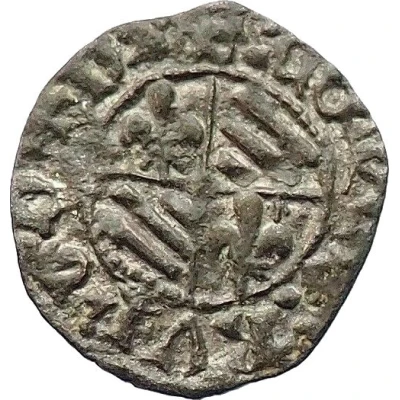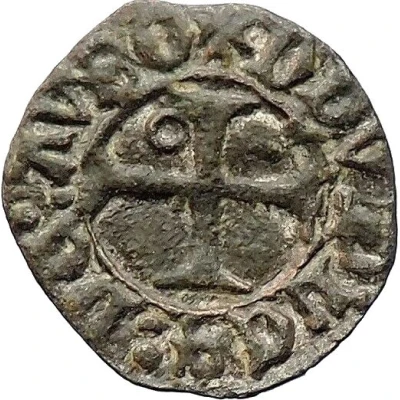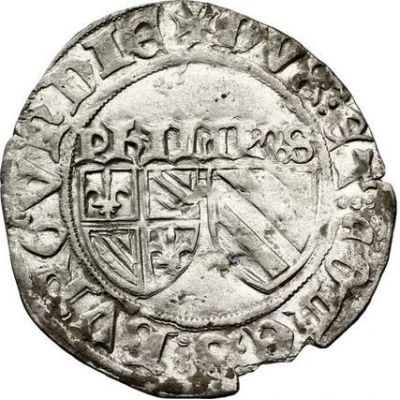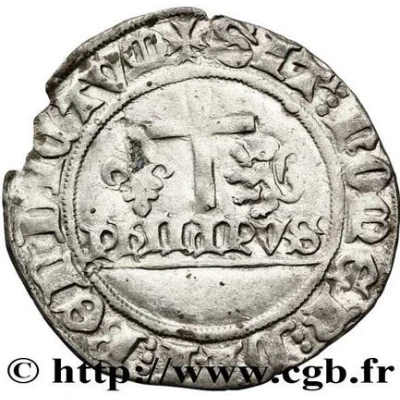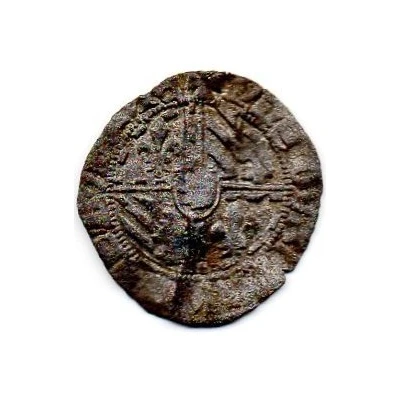
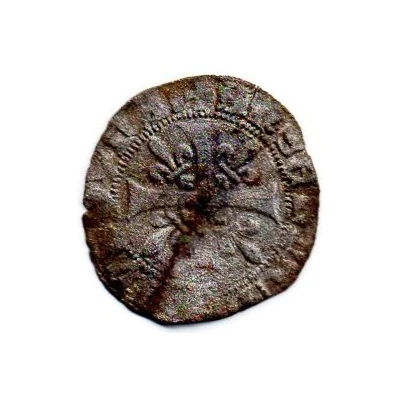

Obverse © pfouque
Engrogne with shield - Philip III ND
| Billon | 1.06 g | 22 mm |
| Issuer | Duchy of Burgundy (French States) |
|---|---|
| Duke | Philip III the Good (1419-1467) |
| Type | Standard circulation coin |
| Years | 1419-1467 |
| Value | 1 Denier (1⁄150) |
| Currency | Livre |
| Composition | Billon |
| Weight | 1.06 g |
| Diameter | 22 mm |
| Shape | Round (irregular) |
| Technique | Hammered |
| Orientation | Variable alignment ↺ |
| Demonetized | Yes |
| Updated | 2024-10-04 |
| Numista | N#71482 |
|---|---|
| Rarity index | 92% |
Reverse
Cross with four lilies in angles.
Script: Latin
Lettering: + ANSERNA DE AVXONNA
Translation: Engrogne of Auxonne.
Comment
Engrognes (or ansernes) were the coins of the Dukes of Burgundy, three of which were needed to make five deniers tournois. Several spellings exist: angrogne, engrogne or engroigne."Although we see engrognes mentioned quite frequently under the reign of Philippe (le Bon), and even after him, we find almost no coins bearing this denomination in their legends. I have already suggested that the word "anserna", which appears on several coins from Auxonne and Saint-Laurent, is a translation of engrogne". Barthélémy, Essai sur les monnaies des ducs de Bourgogne, 1850.
Interesting fact
One interesting fact about this coin is that it was minted during a time of great turmoil in Europe, particularly in the Duchy of Burgundy. Philip III, also known as Philip the Good, was the Duke of Burgundy from 1419 until his death in 1467. During his reign, he faced many challenges, including the Hundred Years' War between England and France, and the struggles for power within his own dynasty. Despite these challenges, Philip III was able to maintain the power and influence of the Duchy of Burgundy, and his coinage, such as this Engrogne with shield, reflects the prosperity and cultural achievements of the time.
